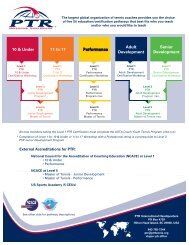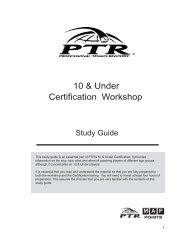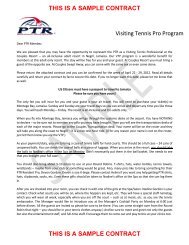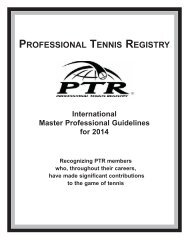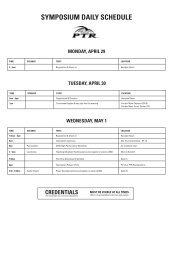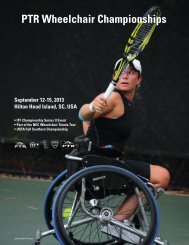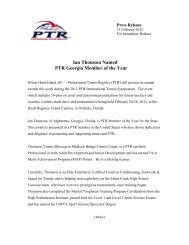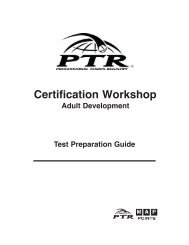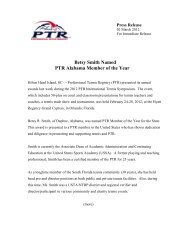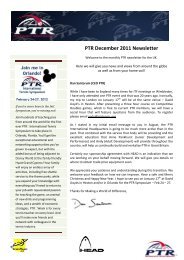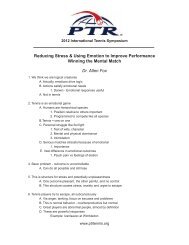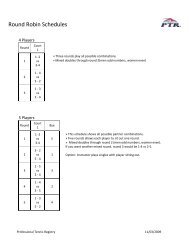SPORT SCIENCE - Professional Tennis Registry
SPORT SCIENCE - Professional Tennis Registry
SPORT SCIENCE - Professional Tennis Registry
Create successful ePaper yourself
Turn your PDF publications into a flip-book with our unique Google optimized e-Paper software.
SpecificitySpecificity means employing training methods that are mechanically and metabolicallysimilar to those used in a particular sport. Some training methods may be useful for manysports and may not resemble skills specific to tennis. Mechanically specific trainingincludes engaging muscles in activities that mimic tennis strokes or movement. Thesetraining methods that resemble tennis movement or skills are called tennis specific.Metabolically tennis specific training includes utilizing energy systems employed in a tennismatch and using similar work/rest intervals. More general or nonspecific exercises providea good foundation for athletic skills.AdaptationAdaptation refers to how the body changes in response to the demands placed on it.The body adapts to appropriate stress or load. Adaptations occur to improve body functionduring stress or load. For example, running will make the body adapt to better utilizeoxygen at the cellular level. Lifting heavy weights will increase strength and muscle size(i.e., hypertrophy) over time.LoadingProgressive loading refers to applying a greater than usual load of stress on the body thatenhances performance without risking injury by overtraining or overuse. Applying greaterthan usual stress is known as overloading. In addition, as the athlete improves andadaptations occur, the amount of load or stress can increase. Therefore, a highly trainedathlete can work at higher loads due to physiological adaptations. Poorly trained athletesmust start with lesser loads, since their bodies have not yet made adaptations and injuriesmay be more likely.Loading involves challenging the athlete, but not to the point of overtraining or injury.An important related concept is perceived exertion, the effort the athlete feels was made.For example, after a tough session, an athlete might feel s/he gave an effort of 9 out of amaximum of 10. Athletes should be taught to gauge perceived exertion to increase bodyawareness and recovery using a scale of 1 to 10. 1 represents sitting and relaxing, and10 represents that hardest possible workout the athlete has ever undertaken and cannotcontinue.PTR Practical On Court Applications for Sport Science 5



